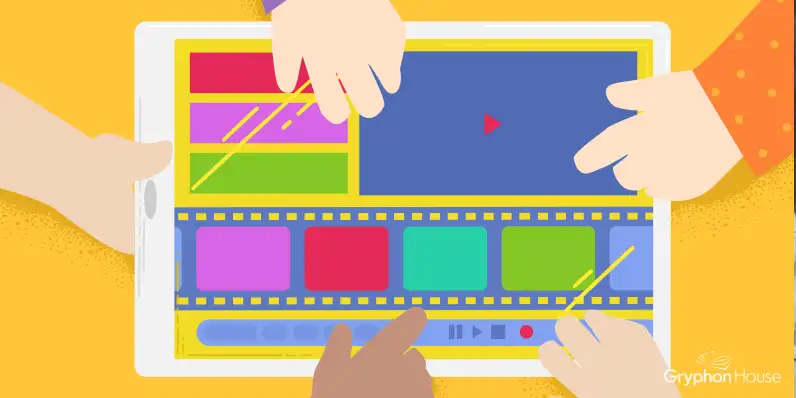What is digital storytelling, and how can you incorporate it in an early childhood classroom? Fran Simon and Karen Nemeth, authors of Digital Decisions, share their perspective on this emerging trend in early childhood education.
Digital storytelling is a way of capturing still and moving images with words and recorded sound – voice and music – to create and keep a lively, multisensory story. This type of activity is so rich in opportunities for supporting language and literacy development that we find it being used in early childhood classrooms throughout the country. Have you watched a wedding video lately? Many times the video starts with music playing in the background while visually zooming in on still photographs, such as pictures of the spouses' childhood homes and baby pictures, then moves seamlessly to actual video of the ceremony and reception. That is an example of how digital storytelling works.
There are several websites that make that kind of production easy for anyone to learn and use. By providing examples, step-by-step instructions, and user-friendly features, sites such as VoiceThread or Storycenter.org allow you to use your own digital photographs and video clips; record and add voices, music, and sound effects; and create a story. Effects can be added to enhance the drama. You may be able to even zoom in and out on pictures, fade in and out, crop, decorate, or highlight.
Other sites such as Voki and Storybird offer a different kind of digital storytelling. You select an avatar – a graphic character that represents you or any character in your story – and provide a voice to that character. There are options for different actions. You can type words and have the characters say them, or you can record your own voice. There are multiple language options as well.
Digital storytelling with these resources has become very popular as an educational tool from preschool through college. There are many blogs, wikis, and other articles that describe new and interesting ways to use this technology for a variety of learning activities that we can hardly imagine. If you want to try this idea, there is more than enough help available!
Are you considering using digital storytelling as a teaching tool? Here is some inspiration:
A New Jersey kindergarten English-as-a-second-language teacher, Monica Schnee, won a national award for her VoiceThread digital story. She helped her young multilingual students learn about polar bears, and they all worked together to create a digital story with artwork and words produced by the children. Using VoiceThread, they were able to record their own voices reading their own words as the screen showed the illustrations they drew. Once the project was posted, other teachers viewed it and recorded their encouraging comments by voice, typing, or both. The project was made available on the website so families of these ESL students who live in other countries could access the story and contribute their comments as well.
For more tools and opportunities to correctly choose and effectively implement technology in your early childhood classroom, order a copy of Digital Decisions: Choosing the Right Technology Tools for Early Childhood Education by Fran Simon and Karen Nemeth.
Author(s)Fran Simon, Karen N. Nemeth
Brianna Blackburn
A graduate of Western Carolina University with a BA in English, Brianna served as a marketing and editorial Intern with Gryphn House in the Summer 2018.

